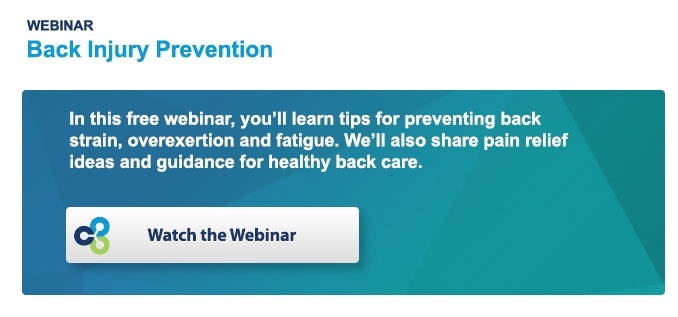 It’s your job as an employer to help keep your employees safe on the job, and that doesn’t just mean providing them with the proper safety equipment. Whether it’s in a warehouse, on a job site, or in an office-setting, creating a culture of safety is key to sending your employees home in the same condition they arrived in.
It’s your job as an employer to help keep your employees safe on the job, and that doesn’t just mean providing them with the proper safety equipment. Whether it’s in a warehouse, on a job site, or in an office-setting, creating a culture of safety is key to sending your employees home in the same condition they arrived in.
In order to be successful, your business needs a foundation of safety that encourages employees on all levels to stay aware of their surroundings and raise red flags when needed. As an employer, you should invest in the best equipment and technology possible to make your workplace as safe as possible. Education and training is a huge part of creating that safety culture. Here are four workplace safety tips every employer (and employee) should know.
-
Maintain an Organized Workplace
It seems simple enough to maintain an organized workplace, but you’d be surprised how often a box of tools, leaks or spills can lead to injuries. You should regularly take a walk around the job site or workplace and remove any hazards. Make sure to conduct a regular safety audit, too. This review not only helps you recognize any equipment risks, it also may help you discover other opportunities for improvement.
-
Create a Safety Committee
You want your employees to not only practice, but also preach safety. If you involve them in the process and allow them to contribute, they’ll be all the more excited to help you maintain the safety culture you’ve worked so hard to create. Create a committee of “safety ambassadors” who can help you think of new ways to prevent accidents and get their co-workers on board. Have the safety committee members help you make it clear to others that you want to hear any safety concerns or new ideas they might have. Reward those who perform their work safely and use them as an example for others.
According to OHSA, in a strong safety culture, everyone feels responsible for safety and pursues it on a daily basis; employees go beyond "the call of duty" to identify unsafe conditions and behaviors, and intervene to correct them. For instance, in a strong safety culture any worker would feel comfortable walking up to the plant manager or CEO and reminding him or her to wear safety glasses. A company with a strong safety culture typically experiences few at-risk behaviors, consequently they also experience low accident rates, low turn-over, low absenteeism, and high productivity.
-
Provide Detailed Job Training that Includes Safety Training
Provide concise work and training instructions for your employees both verbally and in writing. Be sure they understand how to use the equipment associated with their job before they begin work. Sometimes, it may be necessary to provide training documents in other languages. It’s important to include safety training in your orientation for several reasons including:
- Worker safety
- Reduced insurance premiums
- Lower workers’ comp rates
- Compliance with OSHA, DOT and EPA regulations
-
Provide Protective Equipment and Maintain Machinery
Different employees may require different types or sizes of protective equipment so it’s important to work with your staff to determine which specific equipment is needed. You also want to have your machines regularly checked to make the safety mechanisms are operating correctly. Make sure each piece of equipment has clear instructions prominently displayed near it.
Here at FrankCrum, we can help you customize a safety program specific to your company’s needs.





